Food
Chiquita Banana Olympics Stickers: 1980
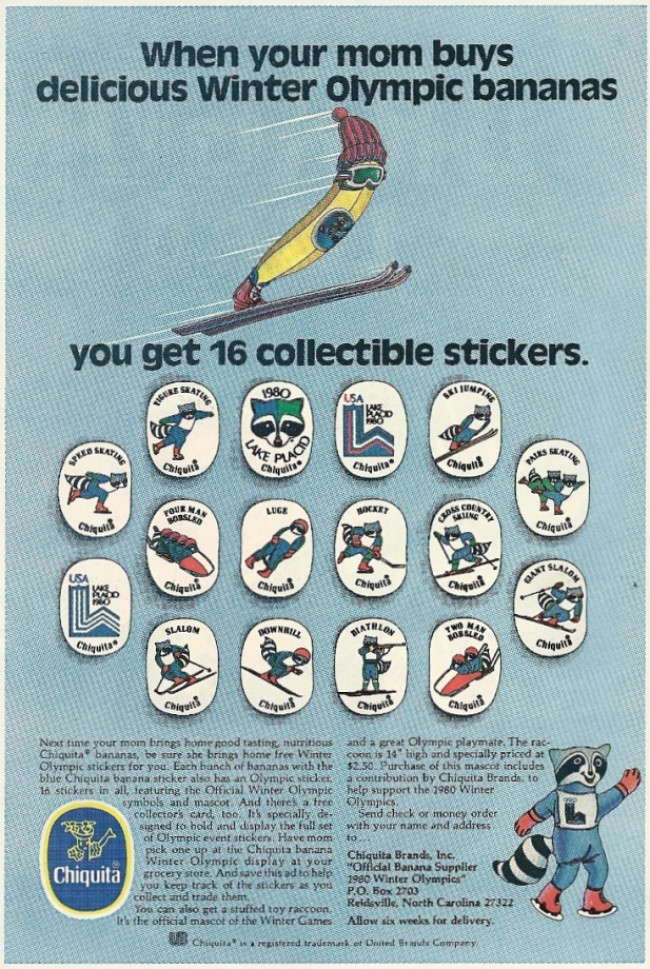
The Brazilian Olympics are in big trouble, as recent news articles tell us. Surely they could use a boost from an athletic banana, like the ad campaign from Chiquita that the 1980 Winter Olympics got. And a tropical fruit is even more synonymous with Brazil than it was with Lake Placid.
Time to bring back Carmen Miranda!
Posted By: Paul - Sun Jul 17, 2016 -
Comments (3)
Category: Disasters, Food, Sports, 1980s, North America, South America, Bananas
Corn with odd number of rows

Hood County News-Tablet - Mar 17, 1966
Ears of corn almost always have an even number of rows. Foodreference.com explains the science:
When corn ears are found that have an odd number of rows, that's considered weird enough to make news. For instance, cases of odd-rowed corn surfaced in 1930 (found by Everett Kelderhouse of Collins, Iowa), 1941 (found by Ignac Sedlacek of Malmo, Nebraska), and 1949 (found by Alfred Kohnert of Calamus, Iowa).
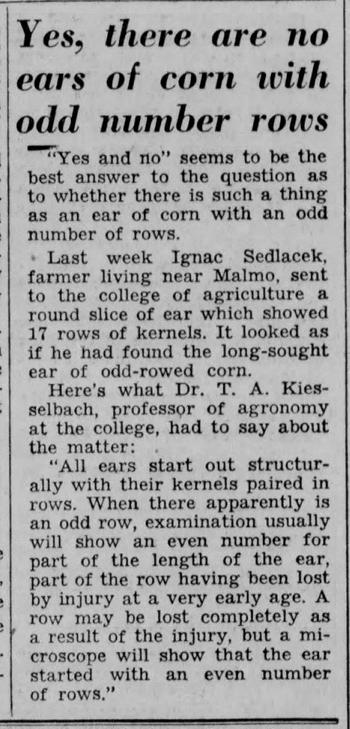
Lincoln Evening Journal - Oct 24, 1941

Carrol Daily Times - Sep 14, 1949
In popular culture, finding odd-rowed corn was sometimes used to make impossible-to-come-true promises. For instance, slaves might be told that they could have their freedom if they could find an ear of corn with an odd number of rows. But in the example below, recounted in Atheism and Arithemetic, Or, Mathematical Law in Nature (1885), one slave supposedly devised a way to find some odd-rowed corn:
Posted By: Alex - Wed Jul 13, 2016 -
Comments (0)
Category: Food, Vegetables
Follies of the Madmen #287
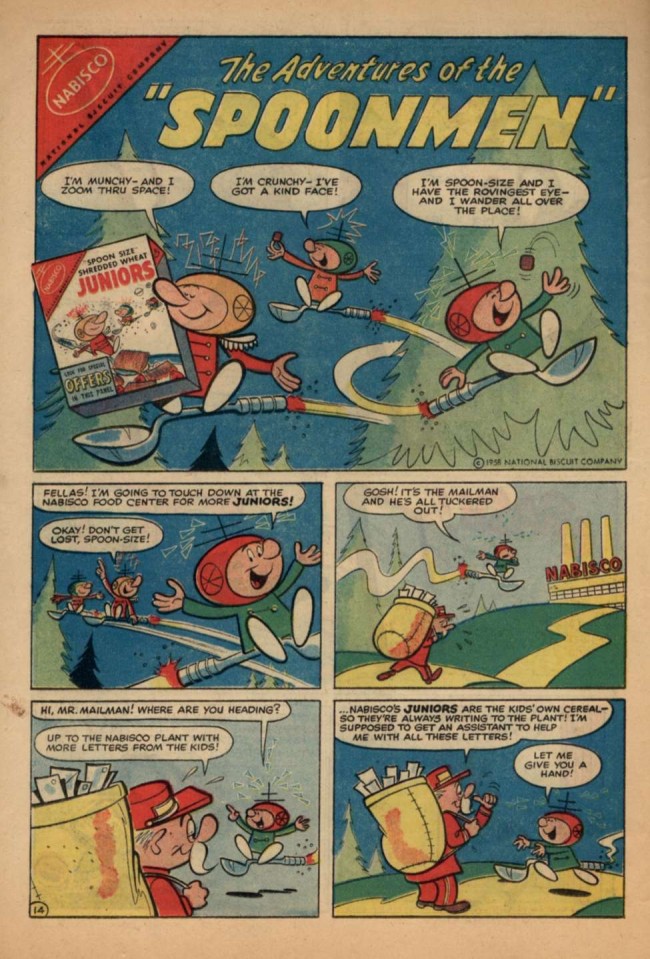
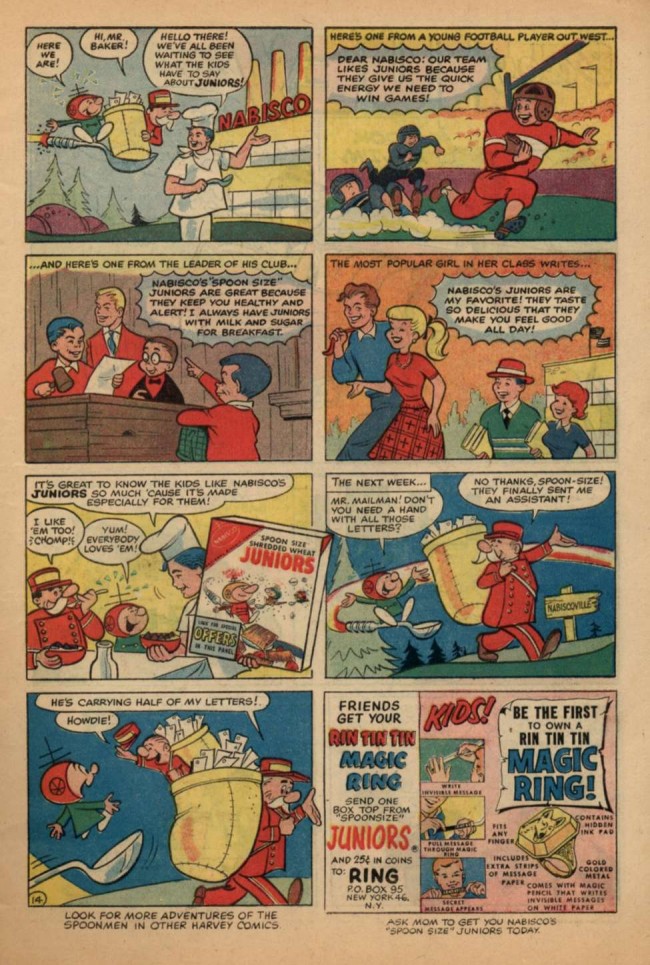
Click to enlarge.
Original images here. (Pages 10 & 11.)
Posted By: Paul - Tue Jul 05, 2016 -
Comments (3)
Category: Business, Advertising, Products, Food, Spaceflight, Astronautics, and Astronomy, Comics, 1950s
40-year-old Twinkie

At the George Stevens Academy in Blue Hill, Maine, a Twinkie has been kept on display for 40 years.
Back in 1976, chemistry teacher Roger Bennatti placed the Twinkie on top of the class blackboard in response to a student question about the legendary shelf-life of Twinkies. Eventually, the Twinkie was moved into a glass display box, but it remains at the school as a perpetual experiment on Twinkie immortality. More info: abc news.
Related Twinkie posts:
Twinkie Facts
Twinkies Art
Posted By: Alex - Fri Jul 01, 2016 -
Comments (5)
Category: Food, Junk Food, Experiments
Peanut Butter believed to be aphrodisiac
In 1971, it was widely reported that a girls' high school in Johannesburg, South Africa had banned peanut butter due to a concern that peanuts were a sexual stimulant.This news, of course, was met with incredulity by the American press, but given the lack of details in the story (the school, for instance, was never named) I suspected it might be an urban legend reported as news. However, in a New Scientist article published two years later (Nov 1, 1973) I was able to find some more information which suggests that the story apparently was true, and that the ban was inspired by local African folk belief about peanuts:
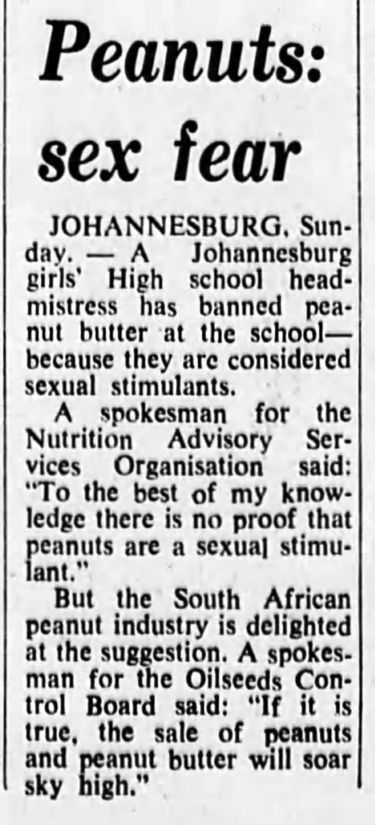
Sydney Morning Herald - July 19, 1971
Posted By: Alex - Fri Jun 17, 2016 -
Comments (2)
Category: Food, Sexuality, 1970s
Man finds $20 inside cheeseburger
When people find stuff in their food that doesn't belong there, it's usually things like cockroaches, small frogs, rat parts, etc. But when Dave Cook bit into his McDonald's cheeseburger, he found a folded-up $20 bill. He didn't complain to the restaurant about the unusual topping. Instead, he took a picture of the burger, finished it, and then called up the local TV news (WTVR in Virginia) to tell them about it.I don't think a $20 bill is something that would get into a burger by accident. It had to be put there. The question is who put it there: Cook himself or one of the McDonald's employees?

Posted By: Alex - Sun Jun 12, 2016 -
Comments (3)
Category: Food, Junk Food, Money
Vertical Farming; Its A Jersey Thing

A facility being built in New Jersey is going to be the world's largest vertical farming plant. AeroFarms is set to be 3 times bigger than the next largest place of its kind located in Japan. Water usage is much lower while yield is substantially higher than standard farming operations. It looks like something that would be used to grow food in a Mars colony or in an underground bunker after Armageddon. But perhaps we will find that solving world hunger is a Jersey thing.
Posted By: Alex - Tue Jun 07, 2016 -
Comments (4)
Category: Agriculture, Food, Vegetables, Horticulture and Gardens, Nature
Fog Vodka
California distillery, Hangar 1, is now selling a vodka made out of genuine San Francisco fog. They're calling it Fog Point.They use mesh fog catchers to trap moisture and then blend this with vodka distilled from a California Central Coast wine. They describe the result as "an extraordinarily crisp, pure, and gluten free sipping vodka with elegant hints of pear, citrus, and honeysuckle." The price tag is $125 a bottle.
Perhaps their next effort can be a vodka made from the tears of a hipster.

Posted By: Alex - Thu Jun 02, 2016 -
Comments (5)
Category: Food, Inebriation and Intoxicants
The Pretzel Bikini
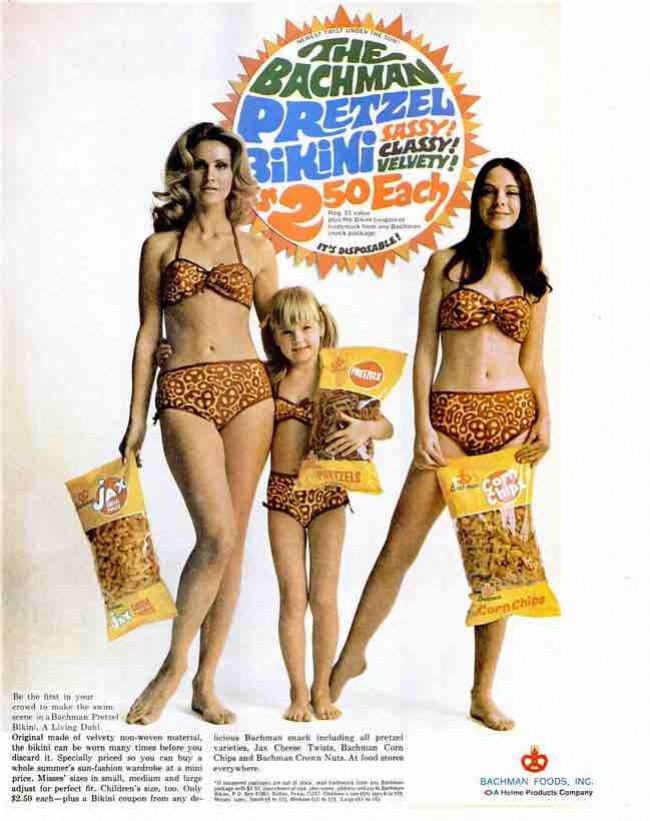
Original ad here.
Posted By: Paul - Sat May 28, 2016 -
Comments (6)
Category: Fashion, Food, Pop Art, 1960s
AbsorbPlate
It's a plate that makes food healthier by soaking up excess calories, according to its creators (the Thai Health Promotion Foundation and BBDO Bangkok):I have an idea that would work even better — a smaller plate.

Posted By: Alex - Fri May 20, 2016 -
Comments (8)
Category: Food, Health, Inventions

| Who We Are |
|---|
| Alex Boese Alex is the creator and curator of the Museum of Hoaxes. He's also the author of various weird, non-fiction, science-themed books such as Elephants on Acid and Psychedelic Apes. Paul Di Filippo Paul has been paid to put weird ideas into fictional form for over thirty years, in his career as a noted science fiction writer. He has recently begun blogging on many curious topics with three fellow writers at The Inferior 4+1. Contact Us |




